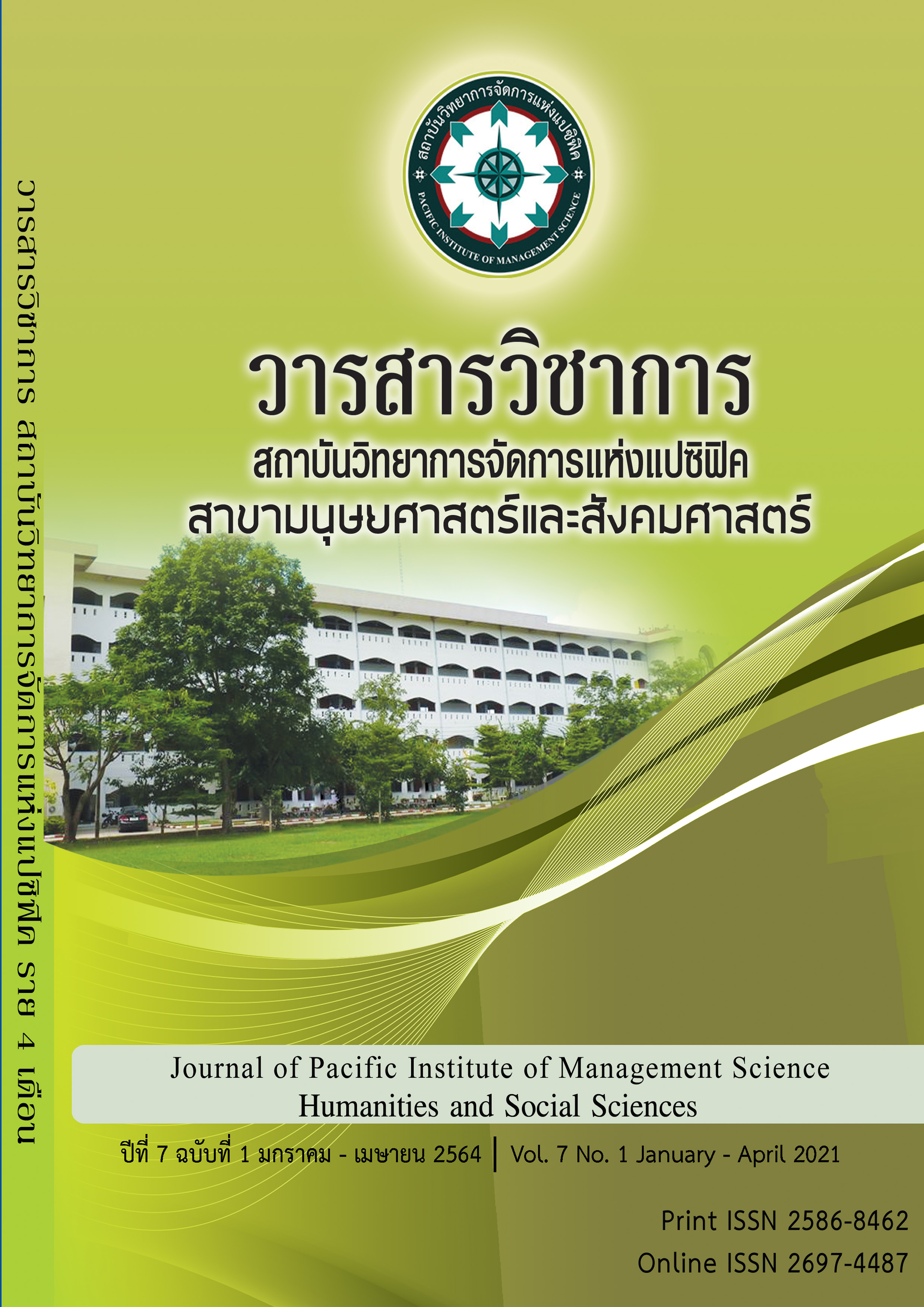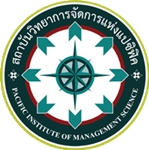CAUSAL RELATIONSHIP STRUCTURE FOR SUSTAINABLE GROWTH OF FROZEN FOOD BUSINESS IN THAILAND IN THE DIGITAL ECONOMY ERA
Keywords:
Causal Relationship, Sustainable Growth, Frozen Food BusinessAbstract
The objective of this research is to 1) examine the consistency of the model and the empirical data of factors that influence the causal structure of the relationship with the sustainable growth of the frozen food business in Thailand during the economic era. Digital and 2) to study direct, indirect, and collective influence Of factors affecting the causal relationship of the structure towards the sustainable growth of the frozen food business in Thailand in the digital economy era By collecting data from 385 Thai frozen food business operators and analyzing the data using the Structure Equation Model (SEM)
The result of the research shows that the frozen food business operators in Thailand Have opinions about marketing strategy factors Dynamic ability factor Technological innovation management factors Competitive capability factors And the factor for sustainable growth of the business is at a high level Also found that After using the software program to check the consistency of the structural equation model, all indexes passed the standard criteria. Therefore, it can be concluded that the analysis results obtained are consistent with empirical data. And from the route analysis, it was found that Marketing strategy factors Dynamic ability factor Technological innovation management factors Competitive capability factors Has a direct influence on the sustainable growth of the frozen food business in Thailand Statistical significance
References
Anatan Lina. (2014). Factors Influencing Supply Chain Competitive Advantage and Performance. International Journal of Business and Information.
Barney, J. (1991). Firm resources and sustained competitive advantage. Journal of Management, 17(1), pp. 99-120.
Bierly, P.E., and Daly, P.S. (2007). Alternative Knowledge Strategies, Competitive Environment, and Organizational Performance in Small Manufacturing Firms. Entrepreneurship Theory & Practice, 31, 493-516.
Cetindamar & Ulusoy (2007). Innovation Performance And Partnerships Manufacturing Firms in Turkey. Journal of Manufacturing Technology Management, Vol. 19, No. 3, p. 332.
Deeds, D.L., Decarolis, D., and Coombs, J. (2000). Dynamic capabilities & new product development in high technology ventures: an empirical analysis of new biotechnology firm. Journal of Business Venturing, 15(3): 211-229.
Department of Business Development, Ministry of Commerce. (2018). Business Data Warehouse, from http://datawarehouse.dbd.go.th/bdw/home/login.html.
Diamantopoulos, A & Siguaw, A.D.(2000). Introducing LISREL: A Guide for the Uninitiated. Sage Publications: London.
Griffith, D. A., et al. (2006). The Performance Implications of Entrepreneurial Proclivity: A Dynamic Capabilities Approach. Journal of Retailing, 82(1): 51-62.
Kotler, P. (1997). Marketing management: analysis, planning implementation, and control. (9th). New Jersey: Asimmon &Schuster.
Leonidou, L. C., Palihawadana, D. & Theodosiou, M. (2011). National Export-Promotion Programs as Drivers of Organizational Resources and Capabilities: Effects on Strategy, Competitive Advantage, and Performance. Journal of International Marketing, 19(2), 1-29.
Lok, Peter & Crawford, John. (2001). Antecedents of organizational commitment and the mediating role of job satisfaction. Journal of Managerial Psychology. 16. 594-613.
Lyon & Ferrier (2002). Enhancing Performance with Product-Market innovation: The Influence of the Top Management Team. Journal Of managerial Issues Vol. 14, p. 452.
March, J. G. (1991). Exploration and Exploitation in Organizational Learning, 71.
Mehmet Koseoglu, Ezhan Karasan. (2013). Throughput modeling of single-hop CSMA networks with non-negligible propagation delay. IEEE Transactions on Communications.
Michael E. Porter. (1985). "TECHNOLOGY AND COMPETITIVE ADVANTAGE", Journal of Business Strategy, Vol. 5 Issue: 3, pp.60-78.
Michailova and Zhan. (2015). Dynamic capabilities and innovation in MNC subsidiaries. Journal of World Business, 50, 576-583.
Narasimhan, Om, Rajiv, Surendra and Dutta, Shantanu. (2006). Absorptive capacity in high-technology markets: the competitive advantage of the haves. Marketing Science, 25 (5). pp. 510-524. ISSN 0732-2399.
Nayyar, Praveen R. (1993). On The Measurement of Competitive Strategy Evidence from A Large Multiproduct U.S. Firm. Academy of Management Journal. 36 (6) pp. 1652 –1669.
Nunnally, J. C. (1978). Psychometric. theory (2nd ed.). New York: McGraw-Hill.
Office of International Trade Promotion (2017). Thai food industry Still occupies the world's number 1 export champion: the Intelligent Center for the Food Industry. Ministry of Commerce: Bangkok. [Online]. Available from http://www.ditp.go.th. [Retrieved 1 March 2019].
Robert S. Kaplan, David P. Norton. (1996). "strategic learning & the balanced scorecard", Strategy & Leadership, Vol. 24.
Shapiro (2006), Measuring Innovation: Beyond Revenue from New Products. Research-Technology Management, Vol. 49, p. 42.
Solomon, Michael R. (2013). Consumer Behavior: Buying, Having, and Being (8th ed.). NJ: Prentice-Hall.
Taniyaworawong .P . (2009). An Analytical Model of Competitiveness Factors of Thai Shoe Export Industry. Ph.D. in accordance with the Doctor of Philosophy degree program Business Administration Ramkhamhaeng university.
This .N, Bamrung .P, Kusanchai .S and Techajod .S . (2015, January-June). Competitive Advantage by Strategic Market Management in the Economic Change of One Tambon One Product Business in Chiang Rai Province. Modern Management Science, 8 (1), 153-164.
Tuan, N.P. & Yoshi, T. (2010). Organizational Capabilities, Competitive Advantage, and Performance in Supporting Industries in Vietnam. Asian Academy of Management Journal, 15(1), 1-21.
Wongmontha. S . (1999). Marketing Strategy. Marketing Planning. Bangkok: Thira Film and Sitex.
Zi-Lin, H. & Poh-Kam, W. (2004). Exploration vs. Exploitation: An Empirical Test of the Ambidexterity Hypothesis. [Article]. Organization Science, 15(4), 481-494.
Downloads
Published
Issue
Section
License
บทความที่ได้รับการตีพิมพ์เป็นลิขสิทธิ์ของ สถาบันวิทยาการจัดการแห่งแปซิฟิค
ข้อความที่ปรากฏในบทความแต่ละเรื่องในวารสารวิชาการเล่มนี้เป็นความคิดเห็นส่วนตัวของผู้เขียนแต่ละท่านไม่เกี่ยวข้องกับสถาบันวิทยาการจัดการแห่งแปซิฟิค และคณาจารย์ท่านอื่นๆในสถาบันฯ แต่อย่างใด ความรับผิดชอบองค์ประกอบทั้งหมดของบทความแต่ละเรื่องเป็นของผู้เขียนแต่ละท่าน หากมีความผิดพลาดใดๆ ผู้เขียนแต่ละท่านจะรับผิดชอบบทความของตนเองแต่ผู้เดียว







